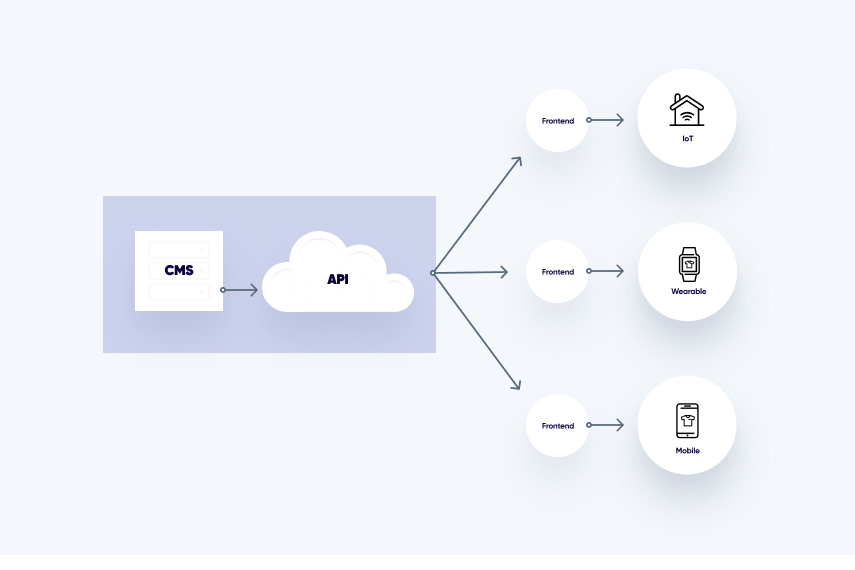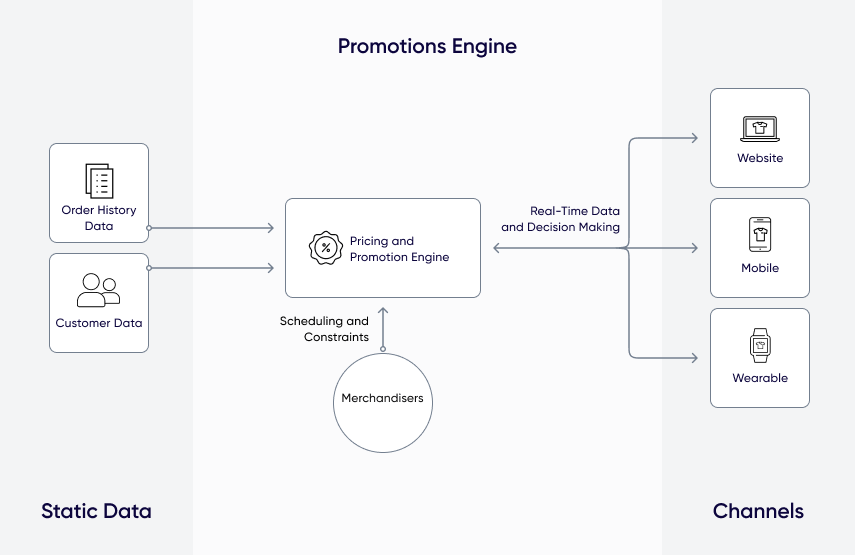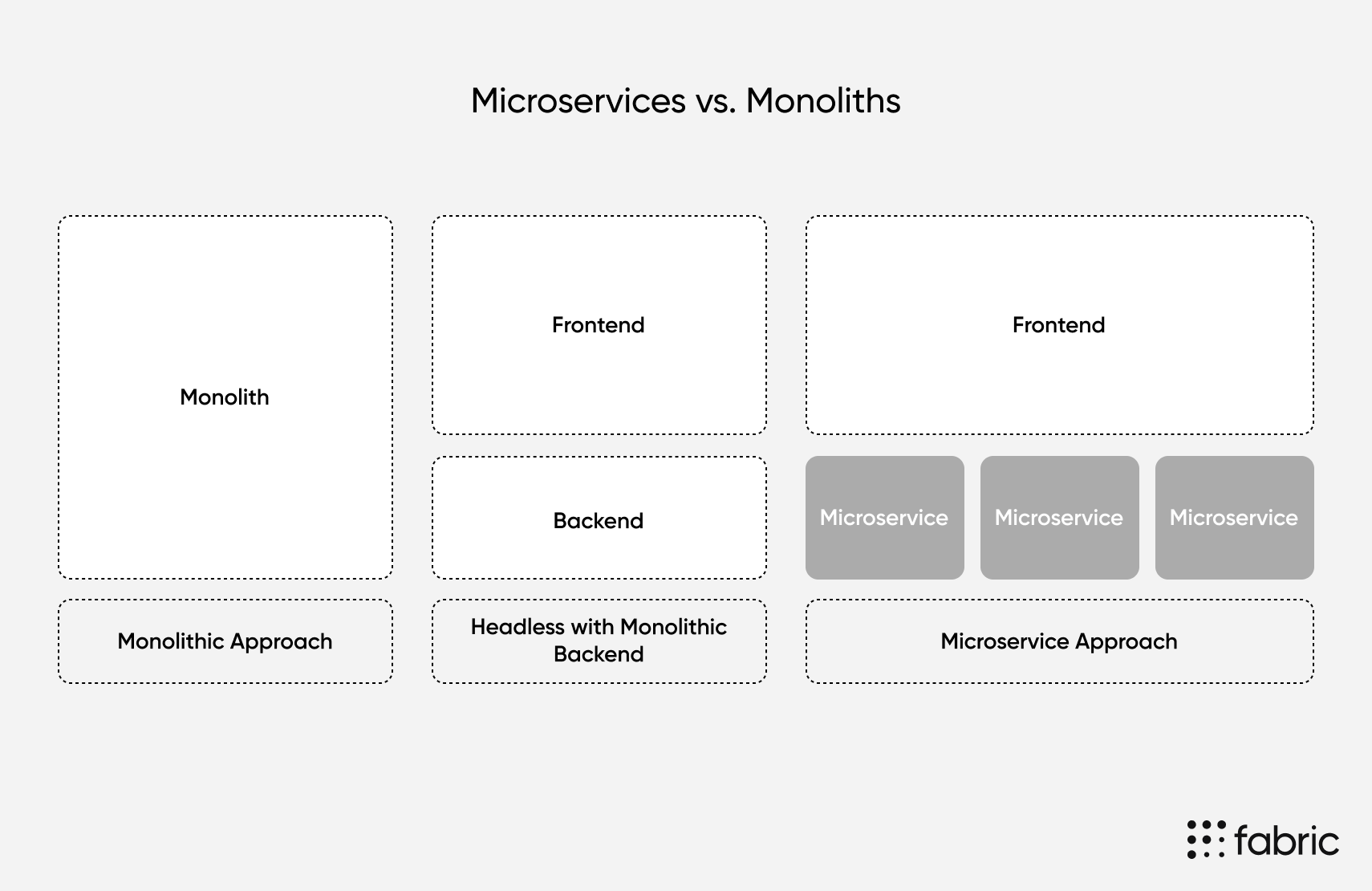Building a Modern Digital Storefront with Microservices

Your storefront is the most important page on your e-commerce site. It is the page that gets the most traffic and is often the first place your target customers interact with your business.
Shoppers who arrive at your digital storefront will make an almost immediate judgment about your store based on what they find. If your homepage is not engaging, or your products are irrelevant, your visitors will leave and go somewhere else. Conversely, a well-designed storefront that is easy to navigate and shows visitors relevant products will increase your chances of turning them into customers.
Modern digital storefronts have an advantage over traditional digital storefronts and physical storefronts in that they are able to show different products to every visitor. This personalization is what defines the modern digital storefront in today’s world of e-commerce.
Amazon.com is a great example of a modern digital storefront. But even though its storefront is personalized, Amazon faces an ASIN challenge that you can take advantage of. With over 12 million different items listed on the marketplace, even the most robust personalization engine can have trouble generating relevant recommendations. So, instead of recommending everything from new Prime movies and Kindle books to seasonal clothing and the latest gadgets like Amazon does, you can focus on recommending the most relevant products specific to your niche and the user’s purchase intent.
But how do you architect and build this experience, quickly and at scale? This is where headless commerce, microservices, and the SaaS platforms that make them accessible to all businesses come into play. We’ll explore these technologies in this post.
[toc-embed headline=”Optimizing Your Digital Storefront with Microservices”]
Optimizing Your Digital Storefront with Microservices
Giving customers the personalization they have come to expect from the modern shopping experience is difficult with a “monolithic” e-commerce platform. With these traditional platforms, the digital storefront is completely tethered to the platform. A single change to part of the system affects the entire system. This limits the ability for business users and developers to create more than just one generic shopping experience that is the same for every customer.
The lack of flexibility from these legacy systems led Amazon to pioneer the practice of headless commerce where the online storefront is self-contained, meaning it is totally separate from the platform or any other backend component. They expanded on this practice by introducing microservices which reduce large processes into a series of components that function independently and communicate via APIs.
Building the modern storefront with microservices removes interdependencies between teams leading to better efficiency and an improved workflow. Business users can add personalized components to digital storefronts and other pages throughout the e-commerce site, independent of what’s going on with other backend components.
Developers can then work in the backend and continue to maintain and optimize custom-built microservices and third party services. This is possible because these backend services are separated from the presentation layer of the storefront and other areas of the site. All that’s required is the APIs, which are unaffected by changes made to the actual services.
With microservices, businesses are also better positioned to scale and adapt in the future. As customer expectations continue to evolve and new e-commerce technologies emerge, any changes can be quickly integrated into the digital storefront using APIs.
In summary: Technology and software exists today that lets merchandisers and marketers treat the digital storefront (i.e. homepage) as a separate e-commerce business entity to optimize, modernize, and personalize.
[toc-embed headline=”Components for Personalizing Your Digital Storefront”]
Components for Personalizing Your Digital Storefront
Using a microservice-based architecture, there are no limits to the number of different components retailers can use to customize every detail of their shopping experience. For now, I want to focus on the three services most essential to building a modern digital storefront.
Headless CMS
With a headless CMS, business users can add personalized components to the digital storefront with ease. Developers only have to code these components once. For instance, with the headless CMS included in Fabric’s Experience Manager (XM), these components are coded with JavaScript and React. They then appear as reusable components in the frontend UI that’s accessible to business users.
An example of a component you can use to modernize your digital storefront is the “Recommended for You” section. This component could personalize products based on a user’s location using location tracking, a personalization engine, and a product API. The component could also personalize products based on order history using an order management service like Fabric’s Order Management System (OMS) and API like Fabric’s Orders API.

Image: Your digital storefront could be a separate channel to optimize and personalize (like mobile and wearable) with a separate frontend. At the same time, this channel would leverage the same data (i.e. products, categories, reviews) as other channels/frontends via an API layer to create a consistent shopping experience across devices. Fabric’s product called Storefront streamlines this process.
Pricing and promotions engine
With a modern storefront, prices and promotions are personalized for individuals or particular audience segments. For example, you could display a special offer for a specific cross-sell item to a previous customer, or show a discount to someone who has viewed multiple products in a certain category but has not made a purchase. You can also vary product prices based on location, time, or user intent.
Traditional platforms incorporate product pricing into the main codebase making it difficult to display different prices or promotions based on each individual shopping experience. Retailers who run a large number of promotions at a single time may also have trouble managing all the offers efficiently within their legacy system. In this situation, you can find that promotions overlap, causing discounts that are far deeper than what is needed to increase sales.
The solution is to take advantage of a pricing and promotions engine powered by AI and machine learning like Fabric’s Offers. Doing so will result in more accurate promotional offers while preventing unnecessarily large discounts. Business users can then focus on the higher-level business objectives while allowing the machine learning to handle the more detailed decisions like generating individual promotions for specific customers.

Image: With a pricing and promotions engine, marketers and merchandisers can schedule promotions and define constraints while real-time data and decision-making logic displays the best prices and promotions to individuals based on location and time zone (customer data) and even order history data.
Personalized search engine
Many shoppers will begin their experience with a search for a specific product, making an intuitive and personalized search function an important part of the modern digital storefront. The search results will ultimately take users beyond the storefront but the homepage is where it all begins.
Personalized search leverages data in each customer profile to order the results in a more relevant manner based on the individual’s purchase and browsing history. Providing this type of personalization via search requires a system built for high performance as personalized results are hard to cache, leading to more requests back to the origin server. Understandably, building a robust search service in house can be a challenge, making this component another attractive option for partnering with a SaaS provider.

If you check out Under Armour’s site you’ll see that the search function displays results and a list of recent searches right on the storefront without you even needing to leave the page. The service’s personalization features also leverage AI to analyze individuals’ actions across different touchpoints to surface the most relevant results.
[toc-embed headline=”Level the Playing Field”]
Level the Playing Field
Today, you don’t have to build tens of thousands of APIs like Amazon has to build a modern digital storefront. Instead, you can use microservices and APIs that are maintained by third-party SaaS providers like Fabric. You also don’t have to hire an army of developers to make changes to your storefront. Instead, you can use a headless CMS like Fabric’s XM to quickly update and personalize your storefront.
This is an exciting time for fast-growing brands and retailers as the capabilities for scaling e-commerce and competing with Amazon are readily available and don’t need to be built from the ground up.
Tech advocate and writer @ fabric.
